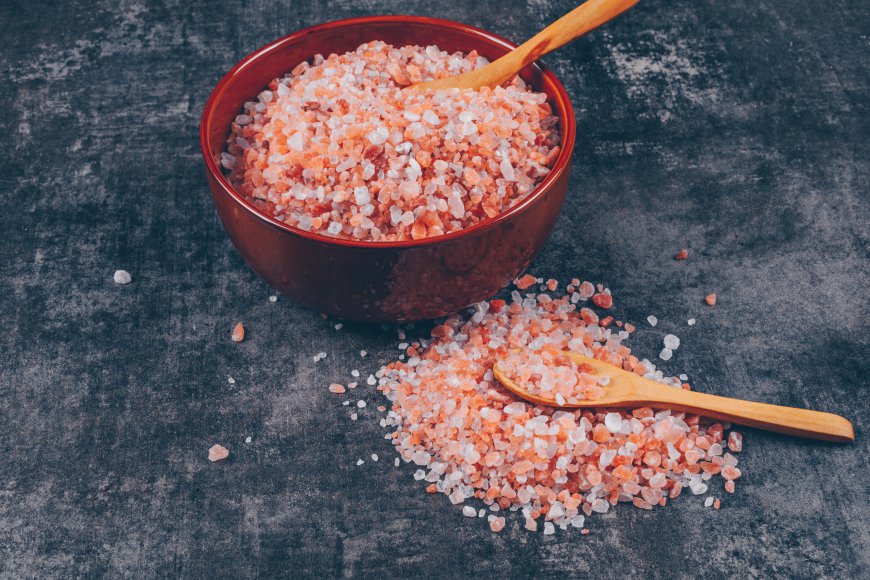edible salt
Edible salt is a kitchen staple and a vital part of our diet. It comes in many varieties, each with its own unique properties and uses.

Salt, scientifically known as sodium chloride (NaCl), is one of the most essential minerals in human life. It plays a vital role in maintaining various bodily functions and is a fundamental part of our diet. Beyond its physiological importance, salt is also used for enhancing the flavor of food, preserving food, and even in various industrial applications. Despite its ubiquitous presence, not all salts are created equal. From table salt to sea salt, Himalayan pink salt to kosher salt, the world of edible salts is diverse and fascinating.
Algohar World natural salt lamps that are believed to provide various benefits, combining both the aesthetic appeal and the potential health advantages associated with Himalayan salt lamps.
The History of Salt
Salt has been an integral part of human history for thousands of years. Its use dates back to ancient civilizations, where it was highly valued for both its preservative and flavoring properties.
Ancient Times
Salt was so precious in ancient times that it was often referred to as "white gold." It played a crucial role in the development of early trade routes, such as the Salt Road, and was used as currency in some societies. The Romans, Egyptians, and Chinese were among the many civilizations that recognized its value. The word "salary" even comes from the Latin word "sal," meaning salt, because Roman soldiers were sometimes paid with salt.
Salt in Religion and Culture
Salt has long been associated with purity and preservation in various cultures. In many religious practices, it has been used in rituals and offerings. For example, in Christianity, salt is a symbol of purification, while in Hinduism, it is used in sacred ceremonies.
Types of Edible Salt
There are several different types of edible salt, each with its own unique properties and uses. Understanding the differences can help you choose the right salt for your cooking and health needs.
Table Salt
Table salt is the most common and widely used form of salt. It is highly refined, with impurities and trace minerals removed. Most table salt is fortified with iodine, an essential nutrient that helps prevent thyroid issues. The fine texture of table salt makes it easy to dissolve, making it a popular choice for everyday cooking.
Sea Salt
Sea salt is produced by evaporating seawater and is less processed than table salt. It retains trace minerals such as magnesium, potassium, and calcium, which give it a slightly different taste and texture. Sea salt comes in various grain sizes, from fine to coarse, and is often used as a finishing salt to add texture and flavor to dishes.
Himalayan Pink Salt
Himalayan pink salt is a rock salt mined from the Khewra Salt Mine in Pakistan, near the Himalayas. Its pink color comes from the trace minerals, particularly iron, present in the salt. It is often considered one of the purest salts available and is used in both cooking and health treatments, such as salt lamps and salt therapy.
Kosher Salt
Kosher salt gets its name from its use in the koshering process, where it is used to draw blood from meat, in accordance with Jewish dietary laws. It has larger, coarser grains than table salt and is typically free of additives like iodine. Its texture makes it easy to pinch and sprinkle, making it a favorite among chefs.
Note: edible salt is much more than just a flavor enhancer for food. It plays a critical role in maintaining bodily functions such as fluid balance, digestion, and nutrient absorption.
Celtic Sea Salt
Celtic sea salt is harvested from the coastal regions of France using traditional methods. It is unrefined and retains a high moisture content along with essential minerals. Celtic sea salt has a slightly moist texture and a grayish color due to the clay from the salt beds where it is harvested. This type of salt is prized for its rich mineral content and unique flavor.
Fleur de Sel
Fleur de sel, meaning "flower of salt," is a rare and delicate sea salt harvested from the surface of salt ponds in coastal regions, primarily in France. It forms in thin, fragile crystals and is often used as a finishing salt for gourmet dishes. Fleur de sel has a subtle, briny flavor and is highly valued for its purity and texture.
Black Salt (Kala Namak)
Black salt, or kala namak, is a type of rock salt commonly used in South Asian cuisine. It has a distinct sulfurous aroma and taste, often described as resembling hard-boiled eggs. Black salt is used in various dishes, including chutneys, salads, and fruit salads. It is also a common ingredient in vegan cooking as a substitute for egg flavor.
Conclusion
Edible salt is a kitchen staple and a vital part of our diet. It comes in many varieties, each with its own unique properties and uses. While salt is essential for health, it's important to use it in moderation to avoid potential health risks like high blood pressure and cardiovascular disease. Understanding the different types of salt and how to use them can elevate your cooking and enhance the flavor of your dishes while ensuring you maintain a healthy balance in your diet.

 Tagxa1122
Tagxa1122